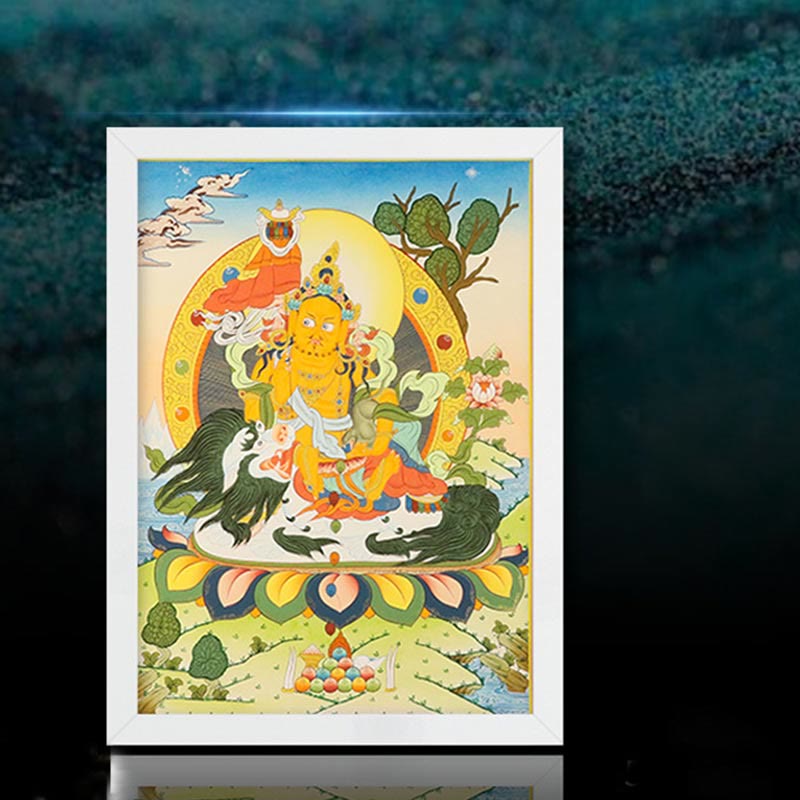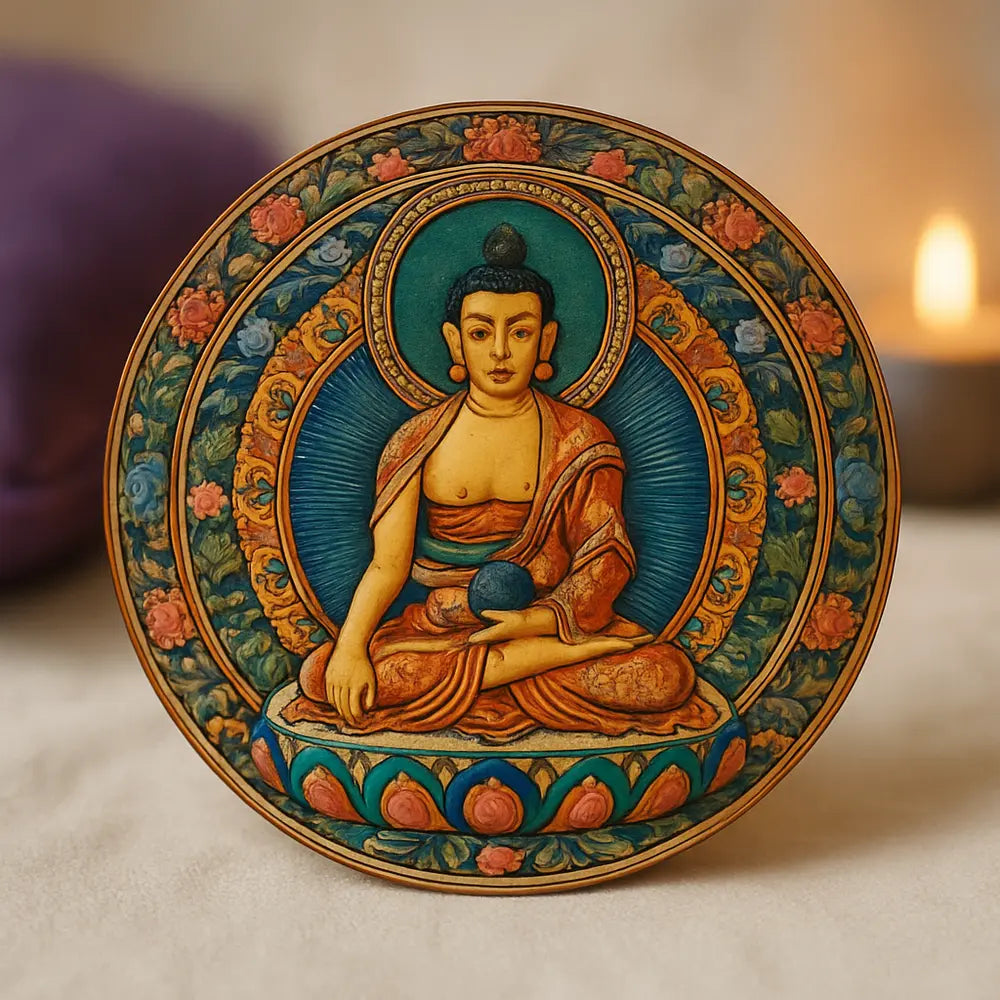
Thangka
11 produits
Affiche 1 - 11 de 11 produits
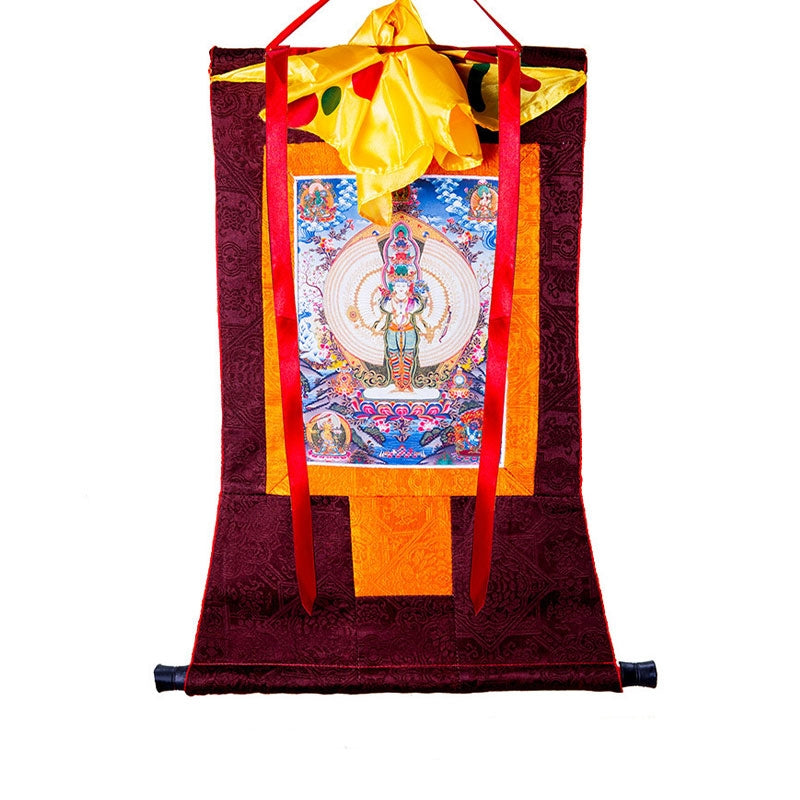
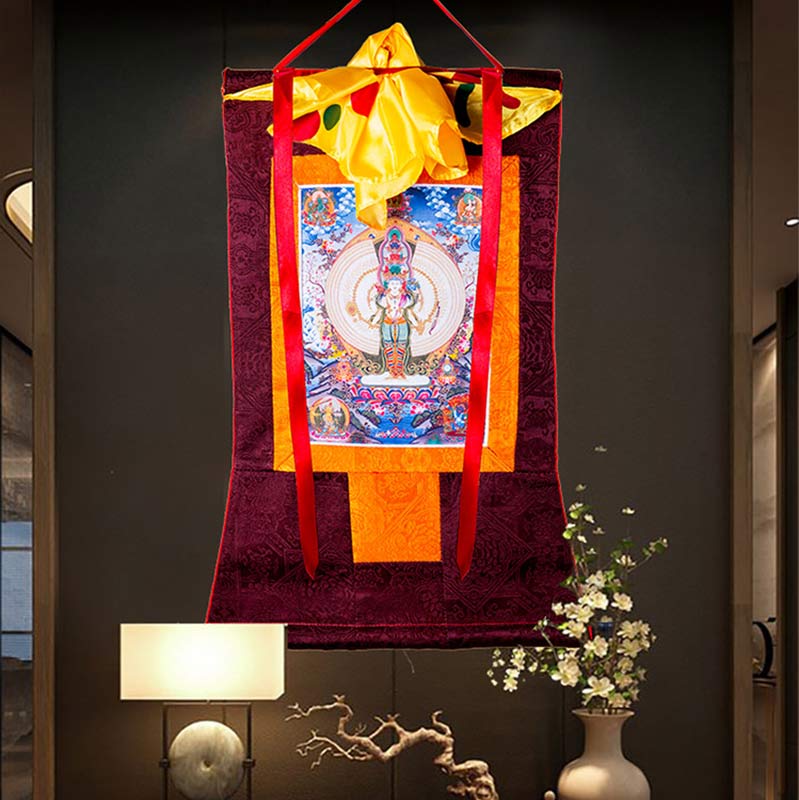
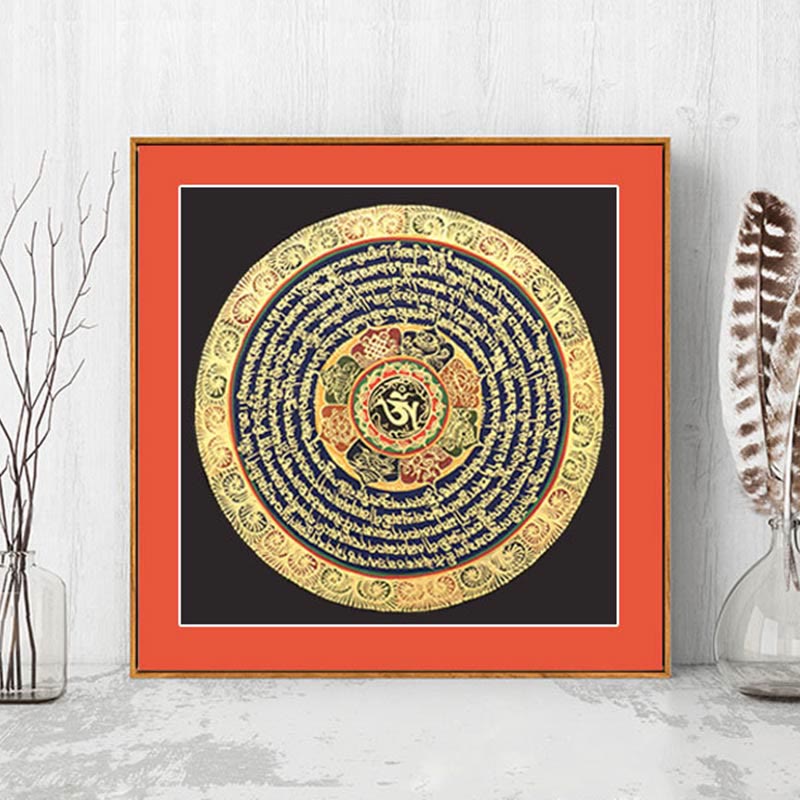
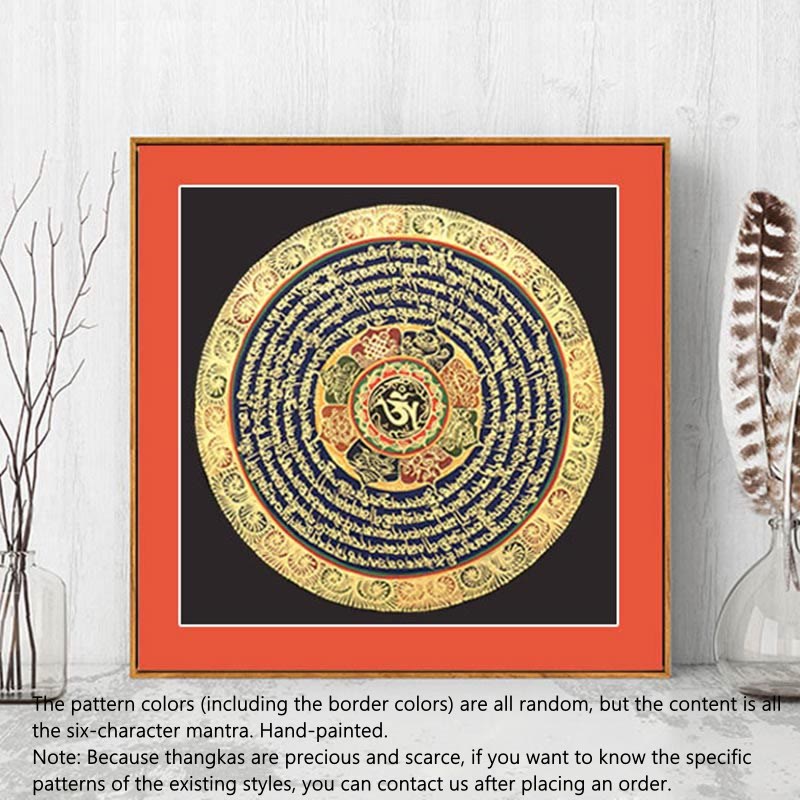
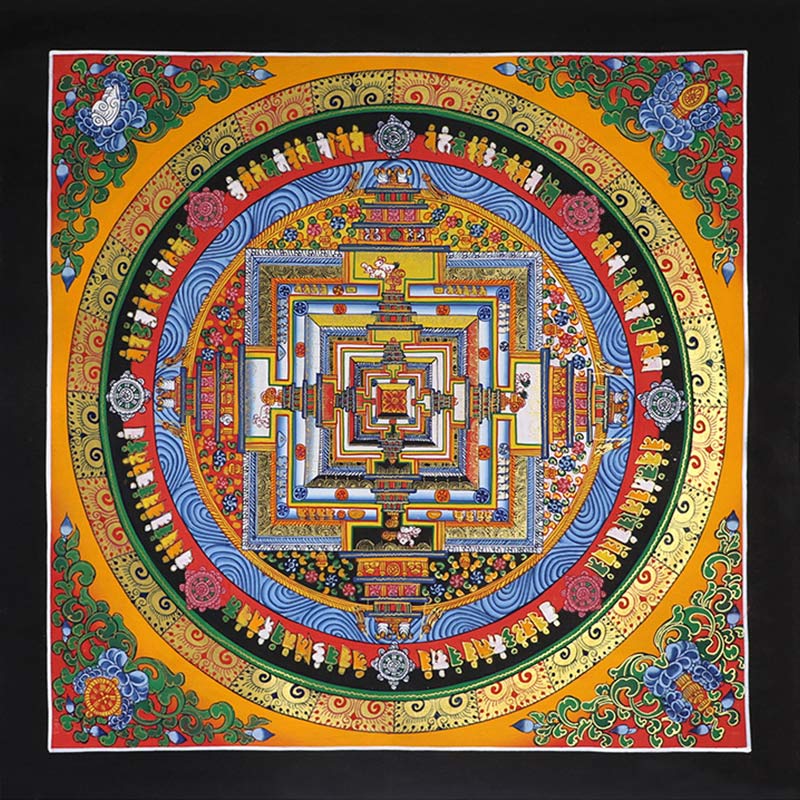
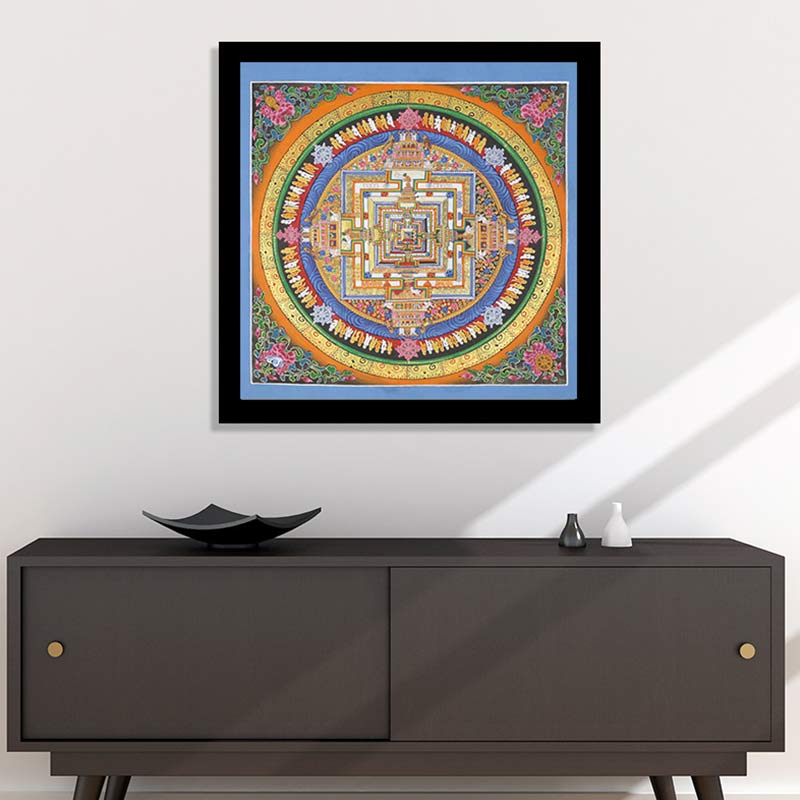
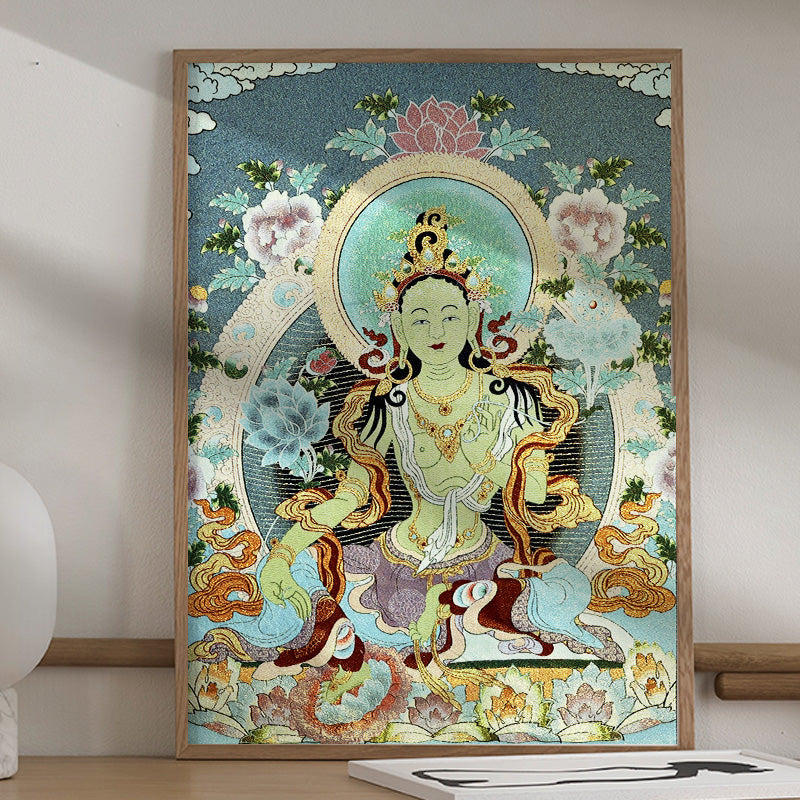
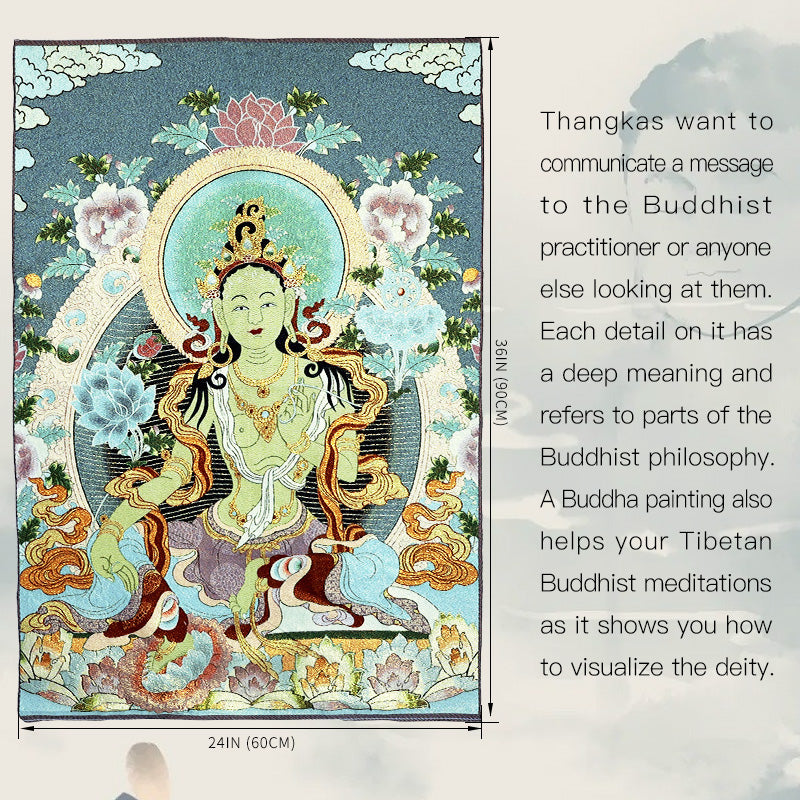
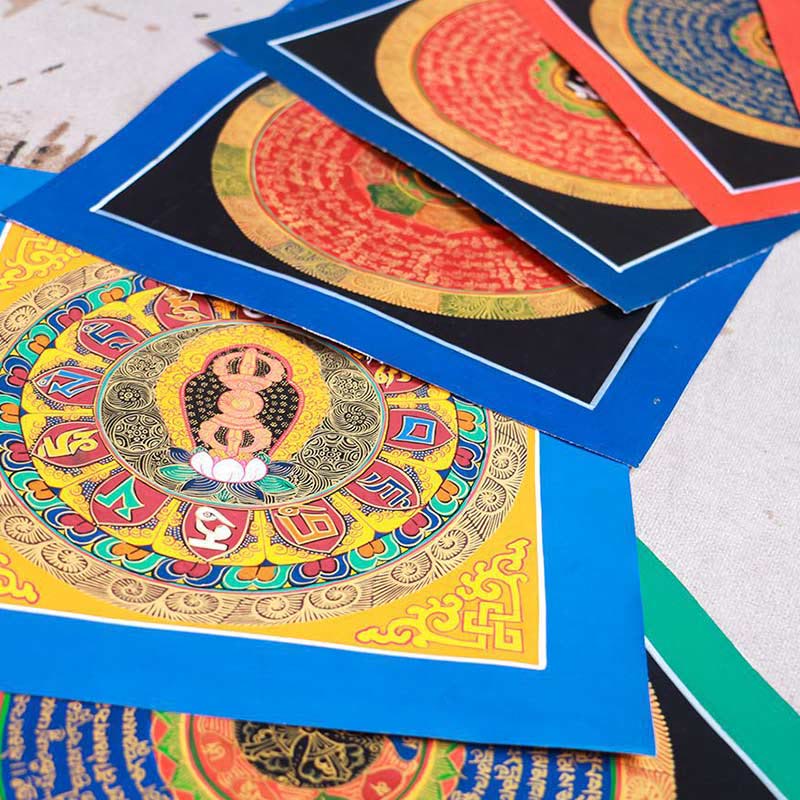
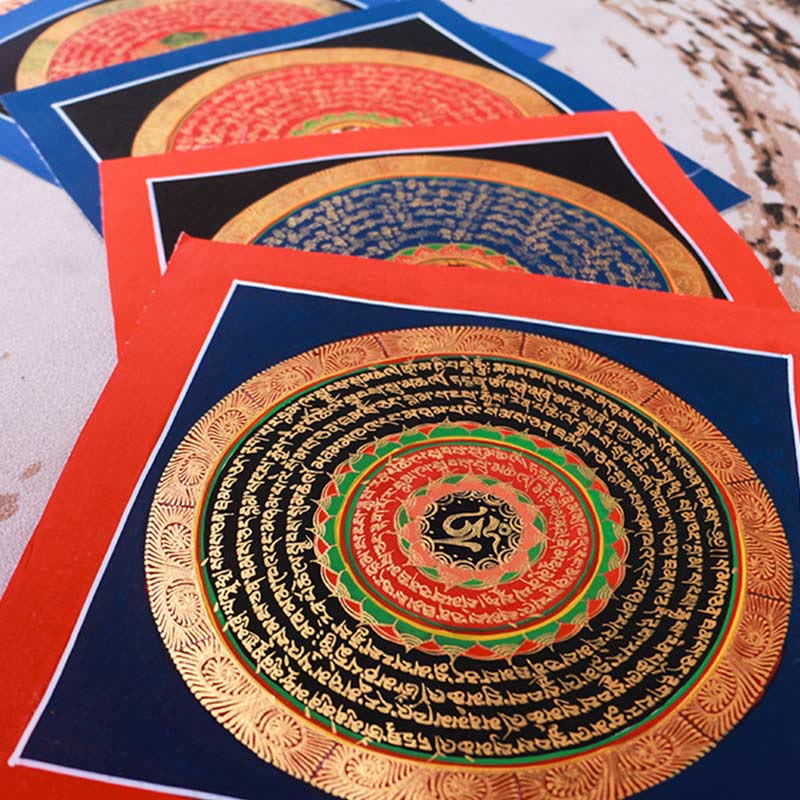
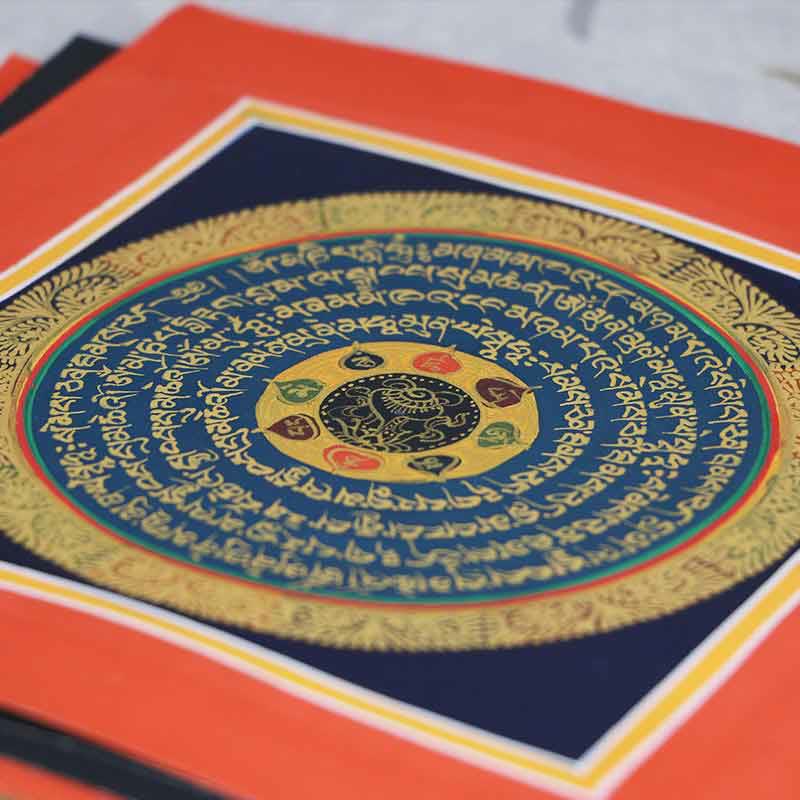
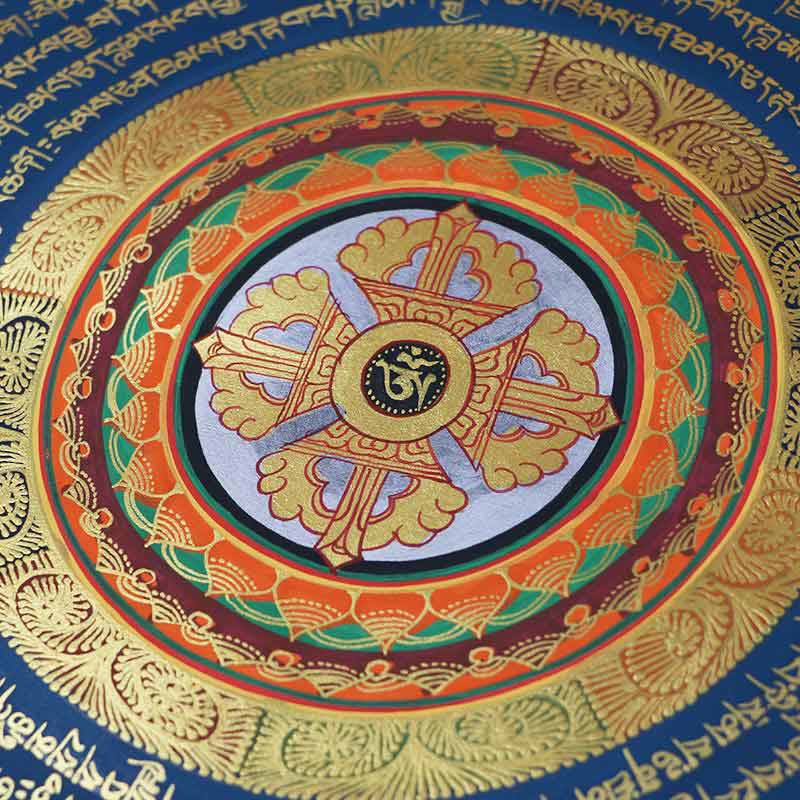
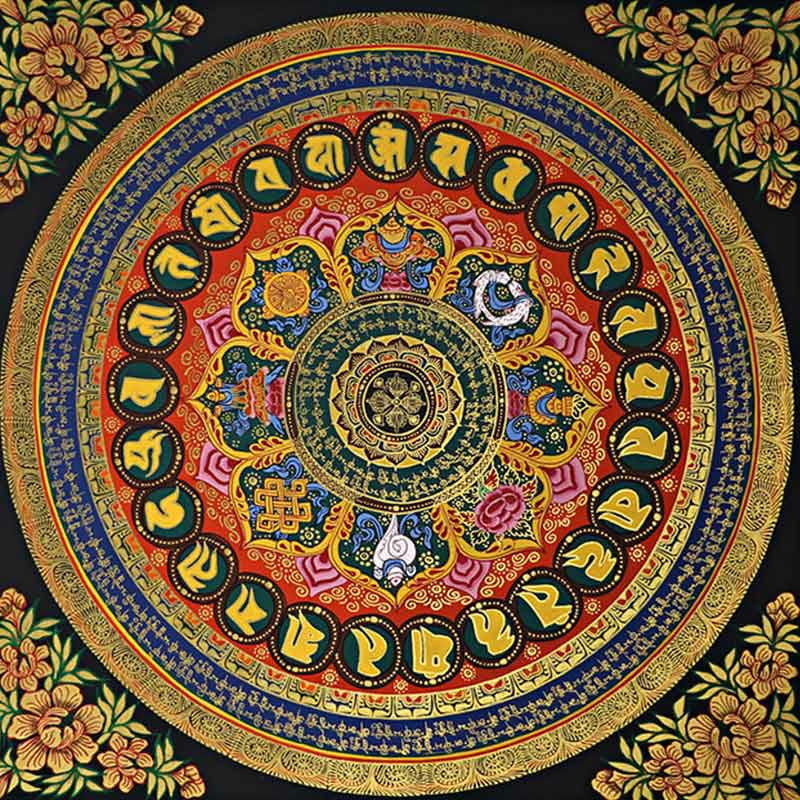
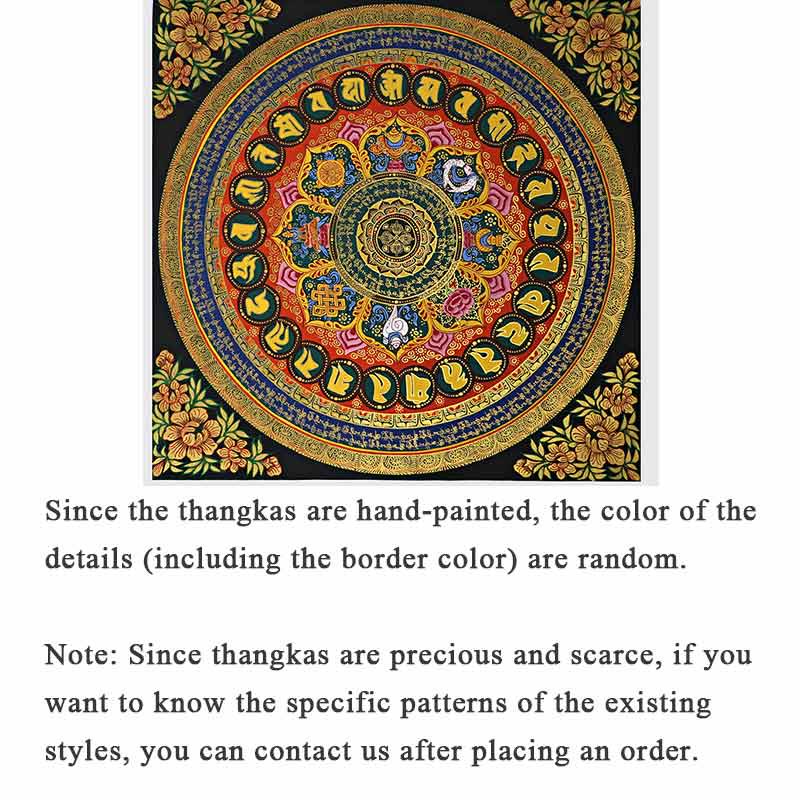
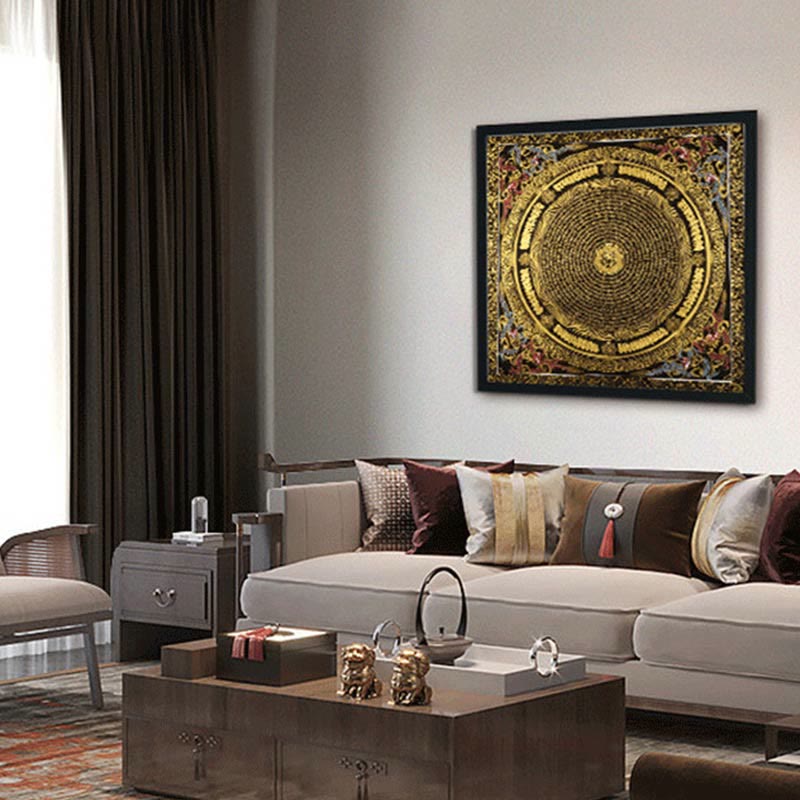
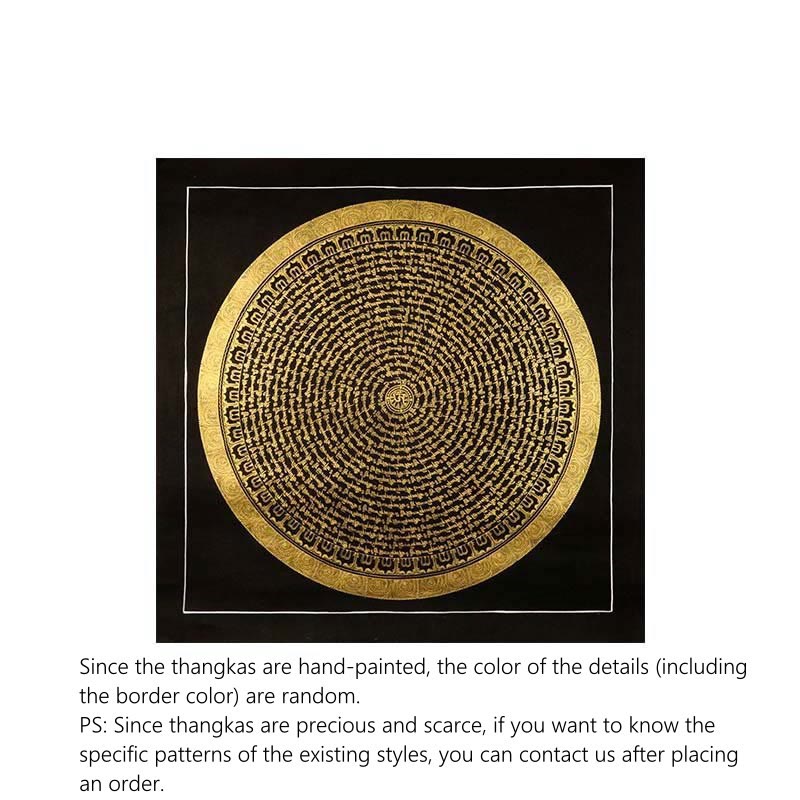
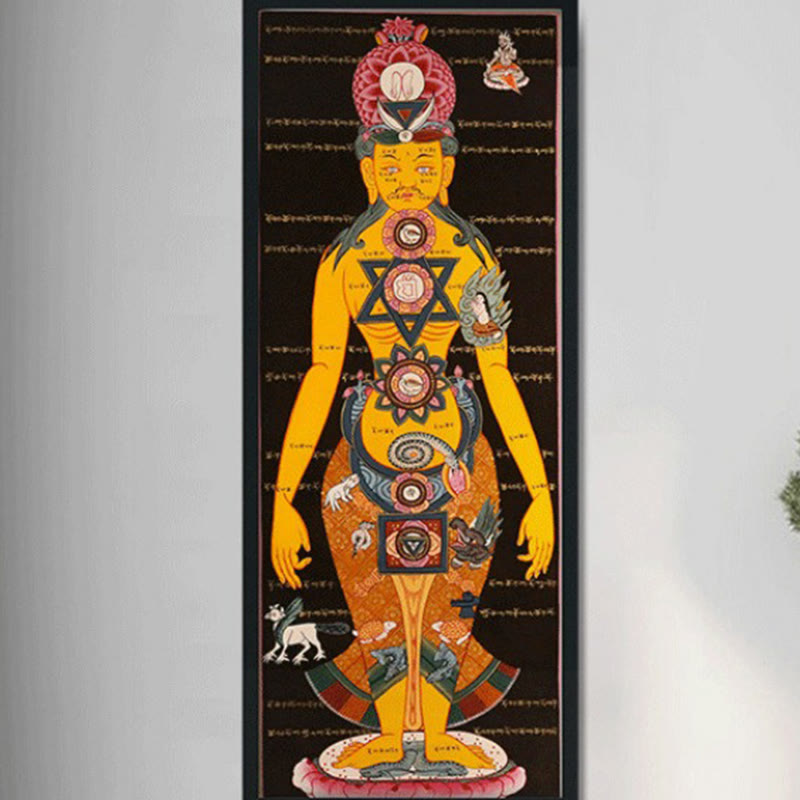
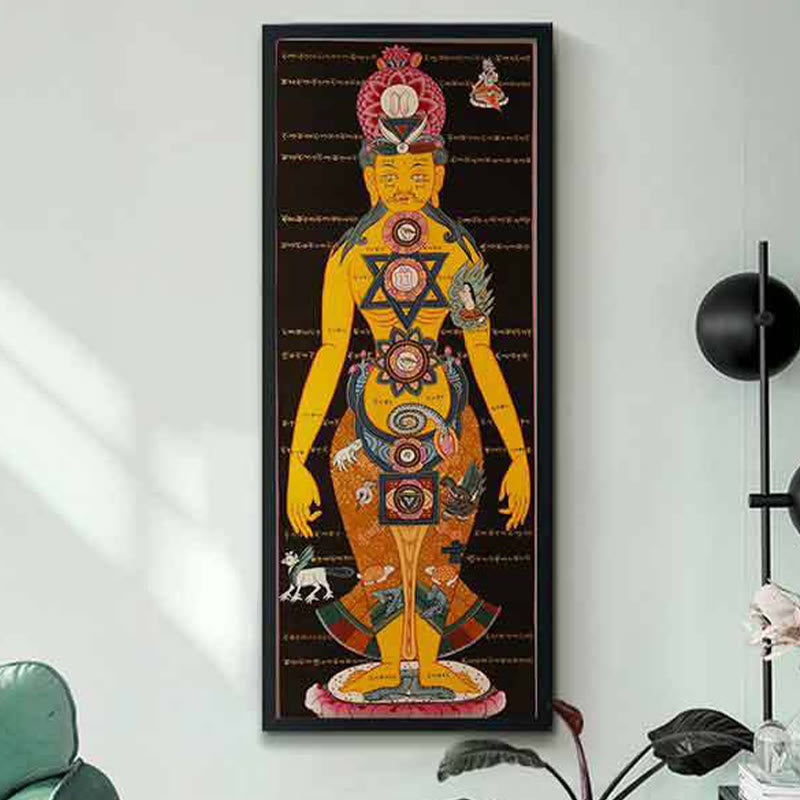
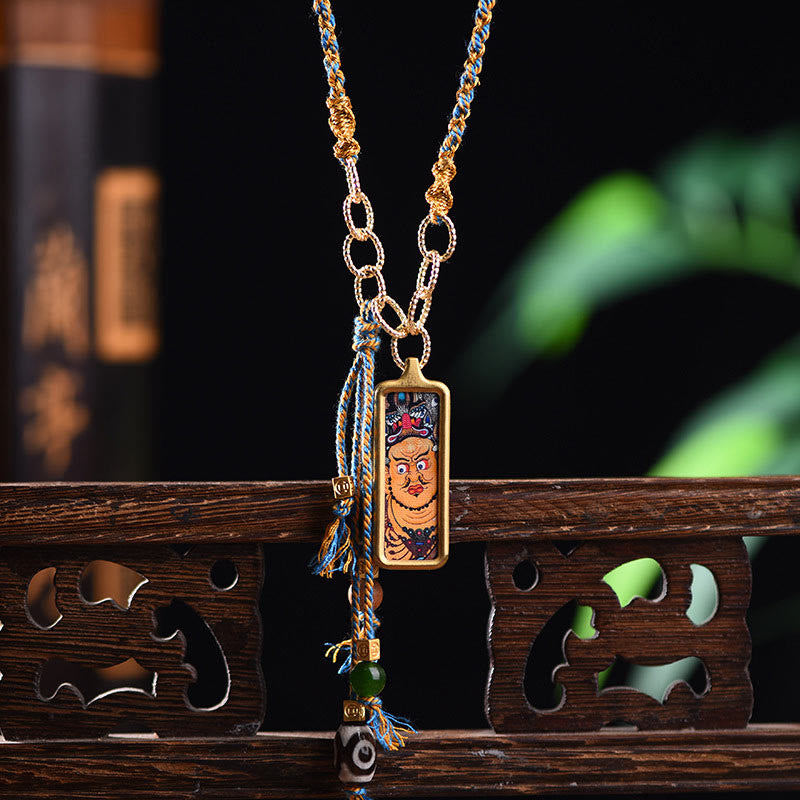
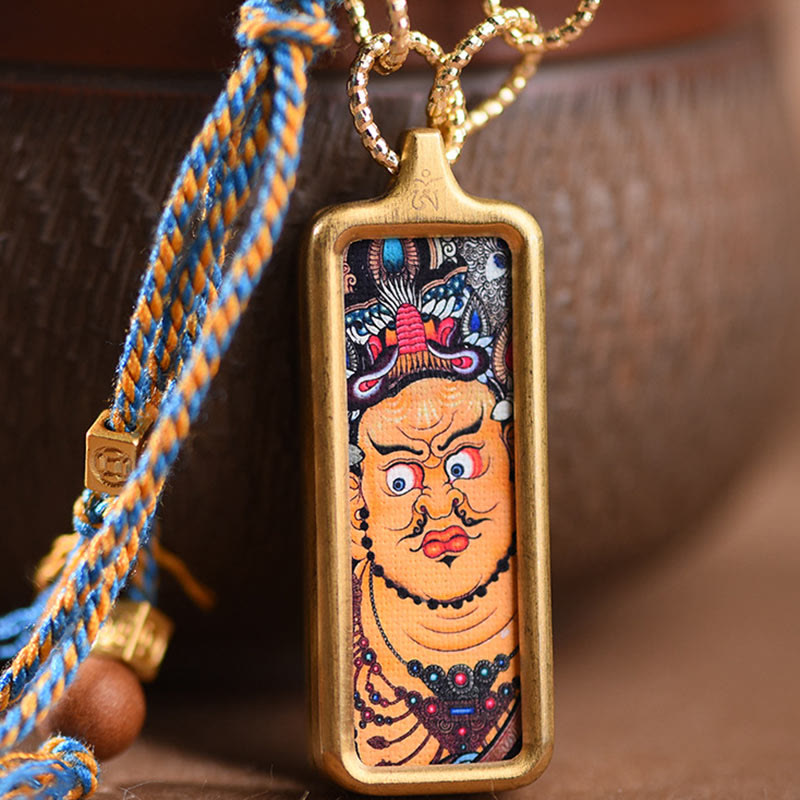
Plongez dans un univers d'art spirituel profond avec notre exquise collection de peintures Thangka . Ces trésors sacrés, issus des riches traditions du bouddhisme tibétain, offrent bien plus qu'une simple beauté visuelle ; ils ouvrent la voie à une compréhension plus profonde, à la méditation et à une connexion avec le divin.
Chaque Thangka de notre sélection est un témoignage de sagesse ancienne et de dévotion méticuleuse, conçu pour inspirer la paix et élever la conscience dans votre espace sacré.
Dévoiler l'essence sacrée de l'art Thangka
L'art thangka est une forme d'expression vénérée du bouddhisme tibétain, un langage visuel qui communique des concepts et des récits spirituels complexes. Ces peintures complexes sont de puissants outils de contemplation et de développement spirituel, vous invitant à explorer les profondeurs de la philosophie bouddhiste.
Définition du Thangka : une fenêtre sur l'illumination
Un thangka , souvent appelé art du rouleau bouddhiste , est traditionnellement une peinture appliquée sur coton ou soie, représentant généralement une divinité, une scène ou un mandala bouddhiste. Plus qu'une simple décoration, un thangka est un objet sacré, imprégné d'énergie spirituelle et destiné à accompagner le pratiquant dans son cheminement vers l'illumination. Il est souvent enroulé lorsqu'il n'est pas utilisé, reflétant sa nature portable, traditionnellement porté par les moines et les pratiquants.
La création d'une peinture Thangka est en soi une pratique méditative, exigeant une patience immense, une précision et une compréhension approfondie de l'iconographie Thangka . Ces œuvres sont considérées comme essentielles à la méditation personnelle et sont fréquemment utilisées dans les temples et les monastères à des fins dévotionnelles.
L'ancienne lignée de la peinture thangka tibétaine
La tradition de la peinture tibétaine Thangka remonte à des siècles, évoluant depuis les premières fresques et enluminures bouddhistes. Cet art sacré a été méticuleusement préservé et transmis de génération en génération par des maîtres, souvent au sein de communautés monastiques ou de lignées familiales. Les techniques et le symbolisme de chaque peinture sacrée tibétaine sont imprégnés d'une signification historique et spirituelle.
Chez Healing Sounds, nous honorons cette profonde lignée en nous procurant des thangkas qui reflètent des traditions authentiques et un savoir-faire artisanal. Comprendre le contexte historique enrichit l'appréciation de ces pièces uniques de l'art traditionnel tibétain .
Le profond symbolisme spirituel des peintures Thangka
Chaque élément d'un thangka bouddhiste est riche de sens, des figures centrales aux plus petits détails en arrière-plan. Ce symbolisme complexe sert de guide visuel aux enseignements bouddhistes, offrant des niveaux d'interprétation variés aux pratiquants comme aux amateurs d'art.
Divinités et bodhisattvas Récits visuels de compassion
Les thangkas représentent fréquemment des bouddhas, des bodhisattvas et diverses divinités du panthéon bouddhiste tibétain. Chaque figure incarne des qualités spécifiques, telles que la sagesse, la compassion ou la protection. Par exemple, un thangka de Tara verte invoque le bodhisattva de la compassion rapide et de l'activité éveillée, tandis qu'un thangka de Bouddha de la médecine est associé à la guérison et au bien-être.
Ces peintures de divinités ne sont pas de simples représentations, mais sont considérées comme des présences vivantes, invitant le spectateur à se connecter aux qualités éveillées qu'elles incarnent. La représentation précise de ces êtres éveillés obéit à des règles iconographiques strictes.
Mandalas Cartes géométriques du cosmos
Les mandalas sont un autre sujet important de l'art Thangka . Ces compositions géométriques complexes représentent l'univers, un espace sacré ou l'esprit éveillé. Un tissu peint avec un mandala sert souvent de point focal pour la méditation, guidant le pratiquant dans un voyage symbolique vers le centre, symbolisant l'atteinte de la sagesse et de l'intégration.
Travailler ou méditer sur un mandala peut être une pratique puissante pour recentrer l'esprit et comprendre l'interdépendance de tous les phénomènes. La création d'un mandala Thangka est un acte de profond dévouement spirituel.
Mudras, Asanas et Attributs Comprendre l'iconographie
Les gestes (mudras), les postures (asanas) et les objets symboliques (attributs) portés par les personnages d'un thangka sont essentiels à sa compréhension. Chaque détail est soigneusement prescrit par la tradition et possède des connotations spécifiques. Par exemple, un geste de la main particulier peut signifier l'intrépidité, l'enseignement ou la méditation.
Apprendre à interpréter cet art symbolique du Bouddha approfondit notre compréhension de la peinture et de son message spirituel. La riche iconographie du thangka transforme la peinture en un outil pédagogique précieux.
Le savoir-faire méticuleux des thangkas faits à la main
La création d'un authentique thangka fait main est un processus laborieux qui exige un savoir-faire, un dévouement et une intention spirituelle exceptionnels. C'est cette touche humaine et ce dévouement qui confèrent à chaque peinture sa vitalité spirituelle unique.
De la préparation de la toile aux touches finales, un travail d'amour
Le voyage d'un thangka commence par la préparation minutieuse de la toile, généralement en coton ou en lin, tendue et traitée avec un mélange de gesso et de craie. Cela permet d'obtenir une surface lisse et résistante pour la peinture. L'artiste esquisse ensuite le motif complexe, suivant souvent des grilles iconographiques précises, avant d'appliquer les couleurs couche par couche.
L'ensemble du processus peut prendre des semaines, des mois, voire des années, selon la taille et la complexité du thangka . Ce dévouement garantit que chaque œuvre est une véritable œuvre d'art et de dévotion.
Pigments naturels et minéraux précieux Les couleurs de la tradition
Traditionnellement, les artistes du thangka utilisent des pigments minéraux et végétaux naturels, broyés à la main et mélangés à un liant, souvent de la colle animale. Des couleurs comme les bleus profonds du lapis-lazuli, les rouges vibrants du cinabre et les verts riches de la malachite sont courantes. L'or et l'argent sont également fréquemment utilisés pour souligner et souligner les contours, ajoutant ainsi à la valeur sacrée et à la luminosité du tableau.
L'utilisation de ces matériaux traditionnels dans la peinture thangka népalaise et les traditions tibétaines ancre chaque pièce dans une lignée d'artisanat authentique. Ces couleurs naturelles confèrent également une profondeur et une vivacité uniques que les peintures synthétiques ne peuvent reproduire.
Le rôle de l'artiste Thangka Un praticien spirituel
Un véritable artiste de Thangka est souvent plus qu'un simple peintre talentueux ; ce sont généralement eux-mêmes des pratiquants dévoués. Leur travail est abordé comme une discipline spirituelle, pratiquée avec pleine conscience, prière et une compréhension profonde des enseignements bouddhistes qu'ils représentent. Cette immersion spirituelle est considérée comme essentielle à la création d'un Thangka puissant et authentique.
On pense que l'intention et l'état d'esprit de l'artiste pendant la création insufflent à la peinture une énergie positive et des bénédictions, ce qui en fait un puissant outil de visualisation tantrique .
Détail artistique L'âme d'un véritable thangka
L'extraordinaire niveau de détail artistique d'un thangka ne répond pas seulement à un attrait esthétique ; il répond à une profonde finalité spirituelle. Chaque détail, aussi infime soit-il, contribue à la puissance et à l'efficacité de la peinture, support de méditation et de pratique spirituelle.
Coup de pinceau complexe et lignes fines capturant l'énergie divine
La marque distinctive d'un thangka de haute qualité réside dans son travail au pinceau d'une finesse exceptionnelle. Les artistes utilisent des pinceaux d'une extrême délicatesse pour créer des détails complexes, des expressions sereines des divinités aux motifs subtils de leurs robes, en passant par les éléments symboliques du paysage. Ces lignes fines sont censées canaliser et capturer l'énergie divine dans la peinture.
Cette attention méticuleuse portée aux détails des thangkas peints à la main invite à une contemplation prolongée, permettant au spectateur de découvrir de nouvelles couches de sens au fil du temps. La précision requise témoigne de la maîtrise et de la concentration méditative de l'artiste.
L'importance des proportions et de la géométrie sacrée
Dans l'art du thangka , les proportions des divinités et la disposition de la composition sont régies par des règles strictes de géométrie sacrée et d'iconographie. Ces canons établis garantissent que les représentations sont fidèles aux êtres éveillés et aux principes cosmiques, préservant ainsi l'intégrité spirituelle de l'œuvre.
Le respect de ces mesures et formes traditionnelles est essentiel pour qu'un thangka fonctionne efficacement comme outil spirituel. Il garantit que la peinture transmette correctement les bénédictions et les énergies voulues.
L'authenticité culturelle : le cœur de l'art tibétain du thangka
L'authenticité culturelle est primordiale lors du choix d'un thangka . Une œuvre authentique préserve non seulement une tradition artistique ancestrale, mais porte également la résonance spirituelle et les bénédictions associées à sa lignée. Healing Sounds s'engage à proposer des thangkas qui honorent cet héritage sacré.
Préserver les techniques traditionnelles et les normes iconographiques
Les thangkas tibétains authentiques sont créés à l'aide de techniques et de matériaux traditionnels, conformément à des règles iconographiques strictes transmises de génération en génération. Cet engagement envers la tradition garantit que chaque peinture est une expression authentique de la sagesse et de l'art bouddhistes, et non un simple objet décoratif.
Nous sélectionnons soigneusement nos thangkas afin de garantir qu'ils répondent à ces normes élevées, contribuant ainsi à la préservation de cette forme d'art culturel et spirituel inestimable. Vous recevrez ainsi une véritable œuvre d' art vajrayana .
Soutenir les artisans et les communautés monastiques
En choisissant un thangka authentique, vous soutenez également les artisans qualifiés et, souvent, les communautés monastiques qui dépendent de cet art sacré pour leur subsistance. Nombre de peintres de thangka sont des moines ou des praticiens laïcs qui consacrent leur vie à cet artisanat et à la voie spirituelle.
Healing Sounds croit en un approvisionnement éthique qui profite à ces communautés et contribue à préserver leurs traditions et leur mode de vie. L'acquisition d'un Thangka contribue à cette importante préservation culturelle.
Les thangkas, de puissants outils méditatifs
Au-delà de leur beauté et de leur signification culturelle, les thangkas sont avant tout destinés à faciliter la méditation et la pratique spirituelle. Ils servent de points focaux pour la visualisation, la contemplation et la connexion à des énergies éveillées spécifiques.
Méditation Thangka améliorant la concentration et la visualisation
L'utilisation d'un thangka en méditation, souvent appelé « aide à la méditation thangka » , peut grandement améliorer la concentration et soutenir les pratiques de visualisation complexes courantes dans le bouddhisme tibétain. En se concentrant sur l'image d'une divinité ou d'un mandala, les pratiquants peuvent intérioriser les qualités et les enseignements représentés, approfondissant ainsi leur expérience méditative.
L'imagerie détaillée offre un champ de contemplation riche, contribuant à apaiser l'esprit et à l'ouvrir à des perspectives profondes. Cette pratique est au cœur de nombreuses formes d'utilisation des outils de visualisation tantrique .
Créer un espace sacré avec des peintures Thangka
Intégrer un Thangka dans votre maison ou votre espace de méditation contribue à créer un espace sacré, propice à la paix, à la réflexion et à la pratique spirituelle. La présence d'une peinture rituelle comme un Thangka peut transformer une pièce ordinaire en un sanctuaire, rayonnant d'énergie positive et d'inspiration spirituelle.
Ces œuvres d'art mural spirituel tibétain rappellent constamment nos aspirations spirituelles et le chemin vers la paix intérieure. Elles peuvent être accrochées dans un lieu d'honneur, où elles pourront être régulièrement admirées et appréciées.
Connexion à des énergies spécifiques Tara verte et Bouddha de médecine Thangkas
Différents thangkas peuvent être utilisés pour se connecter à des énergies ou à des aspects spécifiques de la voie bouddhiste. Par exemple, méditer avec un thangka de Tara Verte est censé invoquer sa protection immédiate et son aide bienveillante pour surmonter les obstacles. De même, un thangka du Bouddha de Médecine est souvent utilisé pour des pratiques de guérison, tant pour soi-même que pour les autres.
Choisir un Thangka qui résonne avec vos intentions personnelles ou une divinité particulière vers laquelle vous vous sentez attiré peut considérablement améliorer votre pratique spirituelle.
Intégrer le Thangka dans votre pratique spirituelle et votre décoration
Intégrer un Thangka dans votre vie est une invitation à approfondir votre cheminement spirituel et à enrichir votre environnement d'une beauté sacrée. Que ce soit pour une méditation intense ou comme œuvre d'art inspirante, un Thangka offre de profonds bienfaits.
Choisir un Thangka qui résonne avec votre chemin
Lorsque vous choisissez un Thangka , réfléchissez aux divinités, symboles ou enseignements qui vous touchent le plus profondément. Êtes-vous attiré par l'énergie bienveillante d'Avalokiteshvara, la sagesse de Manjushri ou le pouvoir guérisseur du Bouddha de la Médecine ? Peut-être qu'un mandala complexe stimule votre esprit analytique, ou que la représentation sereine du Bouddha Shakyamuni inspire la tranquillité.
Faites confiance à votre intuition et choisissez un thangka bouddhiste qui parle à votre cœur et répond à vos aspirations spirituelles uniques. Notre collection offre une gamme variée adaptée à tous les chemins et préférences.
Prendre soin de votre art sacré Thangka
Un thangka est un objet sacré qui doit être traité avec respect. Traditionnellement, il est encadré de brocart de soie et parfois recouvert d'une housse de soie pour le protéger lorsqu'il n'est pas utilisé ou pendant le transport. Il est préférable d'accrocher votre thangka dans un endroit sec, à l'abri de la lumière directe du soleil, de l'humidité et de la fumée, afin de préserver ses couleurs et ses matériaux délicats.
Lors de la manipulation, ayez les mains propres et soyez attentif. Un entretien approprié garantira que votre peinture Thangka restera une source d'inspiration pendant de nombreuses années.
L'engagement des sons de guérison Notre promesse de Thangkas authentiques
Chez Healing Sounds, nous nous engageons à proposer des Thangkas d'une qualité et d'une authenticité exceptionnelles. Nous comprenons la signification spirituelle de ces peintures sacrées et nous efforçons de créer des œuvres qui accompagneront véritablement votre cheminement.
Source éthique et création magistrale
Notre collection de Thangkas présente des œuvres issues de sources éthiques, garantissant une rémunération équitable aux artistes et à leurs communautés. Chaque Thangka est réalisé avec brio par des artisans qualifiés, profondément attachés aux traditions spirituelles qu'ils représentent. Nous privilégions le savoir-faire artisanal et le respect des normes iconographiques authentiques.
Nous croyons que l’intégrité du processus d’approvisionnement et de création fait partie intégrante de la valeur spirituelle du Thangka lui-même.
Dynamisez votre voyage avec l'art sacré
Notre mission est de vous offrir des œuvres d'art sacré qui enrichissent votre pratique spirituelle et enrichissent votre vie. Un Thangka de Healing Sounds est plus qu'une simple peinture ; c'est un compagnon de route, une source d'inspiration quotidienne et une fenêtre ouverte sur la profonde sagesse du bouddhisme tibétain. Nous espérons que notre collection de Thangkas vous aidera à trouver l'œuvre qui résonne profondément avec votre esprit.
Découvrez le pouvoir transformateur de ces peintures sacrées et invitez les bienfaits de l'art Thangka dans votre vie. Chaque œuvre est un phare, vous guidant vers la paix intérieure et l'éveil spirituel.
Questions fréquemment posées sur les peintures Thangka
Le but premier d'un thangka est de servir d'outil de méditation, d'enseignement et de dévotion bouddhistes. Il représente visuellement des concepts spirituels complexes, des divinités et des mandalas, aidant les pratiquants dans leurs pratiques de visualisation et approfondissant leur compréhension de la philosophie bouddhiste. Les thangkas sont également utilisés lors de rituels et de cérémonies pour invoquer des bénédictions et créer une atmosphère sacrée.
Le symbolisme spirituel des thangkas est incroyablement riche et complexe. Chaque élément, de la divinité centrale et de sa posture (asana) et de ses gestes (mudras) aux figures, couleurs et objets symboliques qui l'entourent, est porteur de significations spécifiques ancrées dans les écritures bouddhistes. Collectivement, ces symboles racontent des histoires, transmettent des enseignements et représentent des qualités telles que la sagesse, la compassion ou l'éveil, offrant ainsi une feuille de route visuelle pour la pratique spirituelle.
Les thangkas sont utilisés pour la méditation, offrant un point focal pour la concentration et la visualisation. Les pratiquants contemplent le thangka, contemplant la divinité ou le mandala représenté, et s'efforcent d'intérioriser les qualités et la sagesse représentées. Cela peut impliquer des séquences de visualisation complexes, la récitation de mantras et l'immersion dans l'imagerie symbolique, contribuant ainsi à apaiser l'esprit, à cultiver la perspicacité et à se connecter aux énergies éclairées.
Un thangka fait main est réalisé selon un processus méticuleux en plusieurs étapes. Il commence par la préparation d'une toile de coton ou de soie, son étirement et l'application d'un enduit de type gesso. L'artiste esquisse ensuite le motif selon des directives iconographiques strictes, puis applique soigneusement des pigments minéraux et végétaux naturels, souvent à base d'or ou d'argent broyés. L'ensemble du processus exige de l'artiste un savoir-faire exceptionnel, de la patience et souvent un dévouement spirituel.
Les peintures thangka tibétaines sont uniques par leur profonde vocation spirituelle, leur stricte adhésion aux traditions iconographiques et leur savoir-faire méticuleux. Plus qu'une simple œuvre d'art, elles sont des objets sacrés, créés comme des actes de dévotion et de méditation. L'utilisation de pigments naturels traditionnels, la géométrie sacrée, un symbolisme complexe et la transmission d'un savoir de génération en génération contribuent à leur puissance spirituelle et à leur importance culturelle au sein du bouddhisme tibétain.
L'authenticité culturelle des thangkas se définit par le respect des méthodes, des matériaux et des normes iconographiques traditionnels, préservés depuis des siècles. Cela inclut l'utilisation de proportions et de symboles précis pour les divinités, la préparation traditionnelle de la toile et l'utilisation de pigments naturels. Un thangka authentique est généralement créé par un artiste formé à ces traditions ancestrales, souvent doté d'une compréhension spirituelle du sujet, garantissant ainsi une véritable intégrité spirituelle et culturelle.
L'attention portée aux détails artistiques des thangkas est cruciale, car chaque élément, même le plus infime, contribue à l'efficacité spirituelle et à la signification symbolique de la peinture. Un coup de pinceau complexe, des lignes précises et une représentation fidèle des éléments iconographiques sont censés aider à canaliser l'énergie divine et à transmettre avec précision les enseignements bouddhistes complexes. Ce souci du détail favorise également la méditation, permettant au pratiquant de s'immerger profondément dans l'imagerie et ses multiples facettes.
Non, le thangka et le mandala sont différents, bien qu'un mandala puisse être le sujet d'une peinture thangka. Un thangka est le terme générique désignant une peinture sur rouleau bouddhiste tibétaine pouvant représenter divers sujets, comme des divinités, des maîtres spirituels ou des scènes narratives. Un mandala est un type spécifique de diagramme géométrique sacré représentant le cosmos ou un esprit éveillé. Lorsqu'il est peint sur un rouleau, il s'agit d'une forme de thangka.
Les thangkas peuvent coûter cher pour plusieurs raisons. Leur création est extrêmement laborieuse, exigeant un savoir-faire exceptionnel, du temps (des semaines, des mois, voire des années) et une attention méticuleuse aux détails de la part d'artistes hautement qualifiés. Les thangkas authentiques utilisent souvent des matériaux précieux comme des pigments minéraux naturels et de l'or véritable. De plus, leur valeur spirituelle et culturelle, ainsi que le savoir-faire et la lignée de l'artiste, contribuent à leur coût.
Le thangka se prononce généralement « TAHNG-kah ». Le « th » est un « t » doux, contrairement au « th » de « the » ou « think ». L'accent est généralement mis sur la première syllabe. La prononciation peut varier légèrement selon les dialectes régionaux et les systèmes de translittération, mais « TAHNG-kah » est une prononciation largement acceptée.
Pour découvrir d'autres pièces inspirantes pour votre espace sacré, vous apprécierez peut-être également notre collection de tentures murales .






